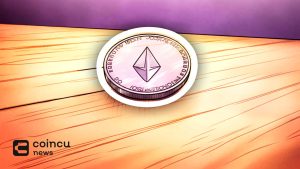ETH remains king to this day, despite the appearance of a number of “Ethereum destroyers”
The term “Ethereum destroyer” is starting to pick up speed again in the crypto market, as the native tokens of several competing blockchain networks recorded significant increases in September. To any alternative network To be considered part of this category, it must have the essential characteristics that serve as the backbone of the Ethereum network: smart contracts.
The most famous blockchain networks by market capitalization that fall into this category are Cardano, Solana, Binance Smart Chain, Polkadot, and Terra. Their native token has skyrocketed this year. Most recently, SOL stepped into the spotlight after the bulls continued their rally despite a market-wide sell-off on September 8 that brought Bitcoin back below $ 50,000.
SOL has more than doubled in the past 30 days, but has only traded around $ 160 since then. The price is up more than 300% in 90 days and 7,871.16% year-to-date (YTD). Meanwhile, ETH is up just over 63.77% in 90 days and up to 385.36% YTD. ETH’s market capitalization is currently around $ 400 billion, nearly nine times SOL’s market capitalization of $ 47 billion.
SOL price table | Source: Tradingview
Ethereum destroyer makes a profit “Giant”
Some networks have promising prospects and gains. Cardano recently completed the Alonzo hard fork and introduced smart contracts with the Plutus language on the network that allow it to host DeFi and Web 3.0 applications. Although the native ADA token reacted poorly to this milestone in the project’s roadmap, it has risen significantly this year. ADA is currently trading at around $ 2.35, up 74.16% over the past 90 days and 1,273.86% year-to-date.
ADA Price Chart | Source: Tradingview
Marie Tatibouet, Marketing Director at Exchange Gate.io, named two reasons that triggered the growth of the Ethereum destroyer. About the network’s lack of scalability, she said:
“If everything is fine, Ethereum is exceptionally slow and can only perform 15-25 transactions per second with very low throughput.”
She also mentioned the high demand and low throughput, the next reason being the “out of control” high transaction fees. This also has an impact on the ongoing boom in the NFT market.
“Do you really want to pay 0.5 ETH gas fee just to mint an NFT?”
In this regard, a Solana Labs spokesperson said:
“Making an NFT with the highest gas concentrations can be very expensive. Recently the mint fee reached 3 ETH, much more expensive than NFT. Solana offers faster speeds and lower prices than Ethereum, which is why the platform is really slowly gaining market share. “
Another Ethereum destroyer whose token has surpassed this year is Terra. Its native token LUNA is up over 500% in the past 90 days, 5.477% YTD and is currently trading at around $ 34.6.
LUNA price table | Source: Tradingview
Such substantial returns often bring the token to the fore as the underlying technology and platform attract more users and increase the adoption rate. Lex Sokolin, Co-Head of Global Fintech and Chief Economist at ConSensys, a blockchain technology company that powers Ethereum’s infrastructure, claims:
“DeFi protocols are applications that grow with the number of users and capital. It is likely that DeFi will be multi-chain and multi-purpose, although the greatest amount of liquidity is still backed by Ethereum. However, scaling and engaging other funds through bridges and exchanges is a net benefit to the ecosystem. “
Ethereum is currently in a critical phase of its transition to ETH 2.0 – a PoS blockchain, after the London hard fork brought important updates like EIP-1559. This Ethereum Improvement Proposal (EIP) was approved by the developers and the miners were forced to accept the change in the transaction pricing mechanism for the network.
The change mainly affects the token’s inflation rate and miners’ income as part of the gas fee is burned after the upgrade. follow data, over 311,300 ETH with a face value of nearly $ 1.1 billion were burned. The current burn rate is 2.7 million ETH / year. This would put the inflation rate at 2.3% with an issue of 5.3 million tokens per year.
Ethereum isn’t the only blockchain network that implements this type of pricing mechanism as Solana burns 50% of the transaction fees to regulate the supply of SOL. A Solana Labs spokesperson added:
“The upgrade from Ethereum London changed the incentives for miners. Some believe this will increase the MEV (the value a miner can get) and solutions have been put in place to solve this problem, but transaction costs on Ethereum continue to be a barrier to growth. Import “.
On-chain data says ETH is still king
While the native tokens of the aforementioned “Ethereum Killer” networks saw impressive growth, a closer look at the on-chain data reveals that ETH usage and volume are still far higher than the rest of the smart market Contracts.
ETH currently has a market capitalization of nearly $ 400 billion, which is significantly higher than the rest of the world. The closest network in terms of market cap is Cardano with a market cap of $ 76 billion, not even 20% that of Ethereum.
According to the data from DappRadar, Total Locked Volume (TVL) in DeFi protocols based on the Ethereum blockchain is over $ 100 billion. In terms of usage, the second blockchain network is Binance Smart Chain (BSC) with a TVL of just $ 18 billion, less than 20% of Ethereum’s DeFi TVL.
The BSC Ecosystem Coordinator at the Binance Exchange, Samy Karim, spoke about the possibility of Ethereum retaining market share once the transition to ETH2 is complete:
“It has to be fast, efficient and at the same time decentralized so that DeFi can achieve mass acceptance. Ethereum is one of the first chains compatible with smart contracts that can use existing communities for growth after the introduction of ETH2, but the potential market share cannot be forecast on an upgrade basis.
Ethereum is currently the market leader in the NFT area as well as in all major NFT platforms, OpenSea, CryptoPunks, Axie Infinity, Rarible, Decentral and all based on Ethereum. However, the entire NFT market is often viewed by opponents as a bubble, most recently China warns of digital collectibles. However, the market continues to expand.
Sokolin spoke out against this view:
“We agree with the assessment of the NFT ecosystem not as a bubble – but as a restructuring of digital media. NFT takes a different path and a sensible economic system opens up a new business model. “
However, even if the “bubble” bursts, it will not have much of an impact on Ethereum. According to Tatibouet:
“NFT or not, Ethereum is the market leader when it comes to smart contract platforms. However, the NFT marketplace gave the competitors an advantage over other platforms. “
As Ethereum continues to gain momentum for its eventual transition to the PoS blockchain, confidence in the financial markets showing its potential is slowly growing. One report British multinational Standard Chartered Bank discussed real-world use cases of blockchain networks, and accordingly, ETH is rated “structurally” between $ 26,000 and $ 35,000. For now, ETH continues to show bullish trading patterns and even has the prospect of hitting $ 6,500 in the next few months.
Join Bitcoin Magazine Telegram to keep track of news and comment on this article: https://t.me/coincunews
At home at home
According to Cointelegraph
Follow the Youtube Channel | Subscribe to telegram channel | Follow the Facebook page






















